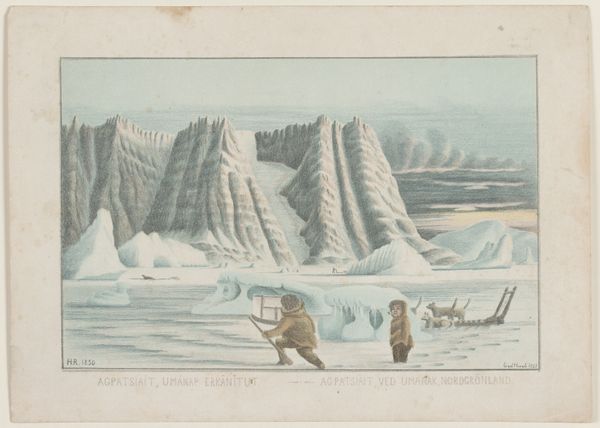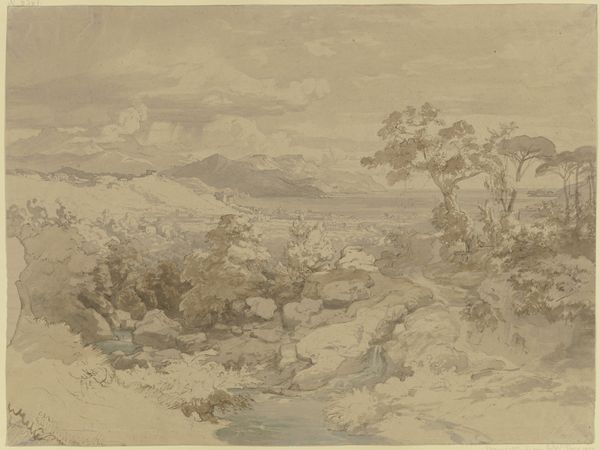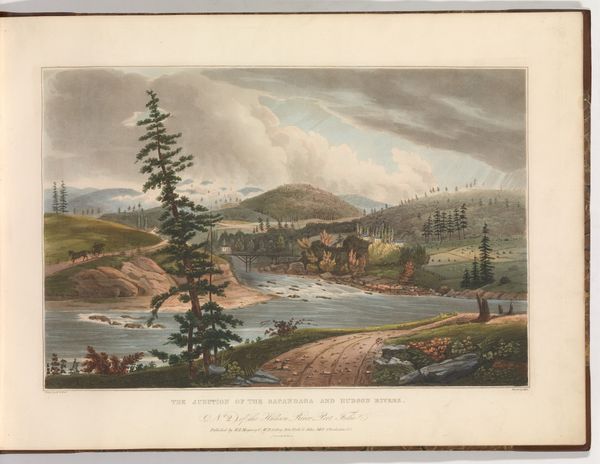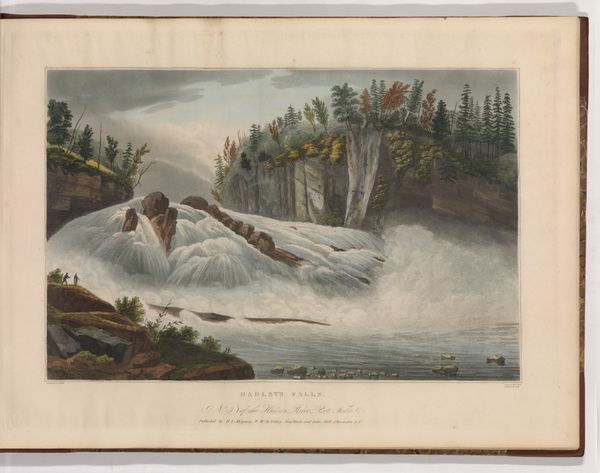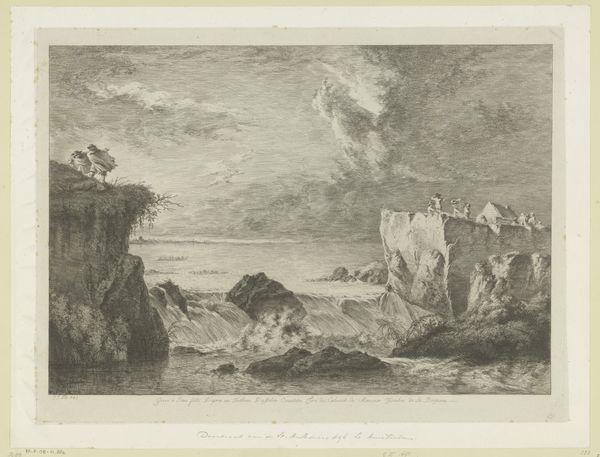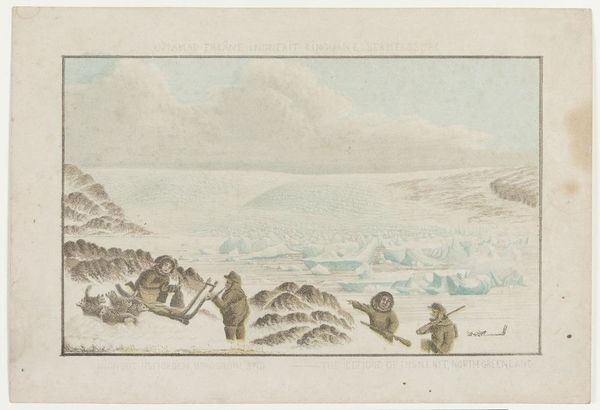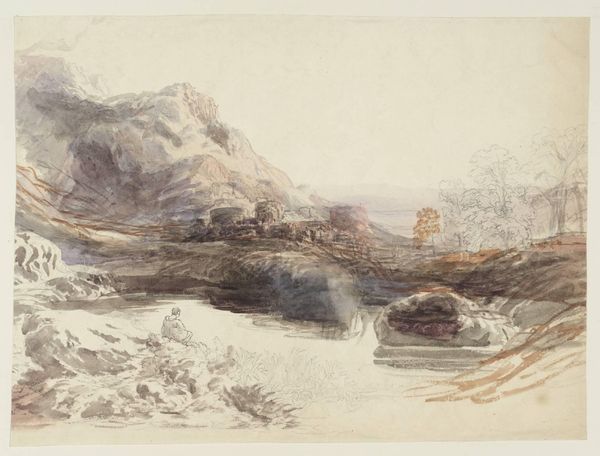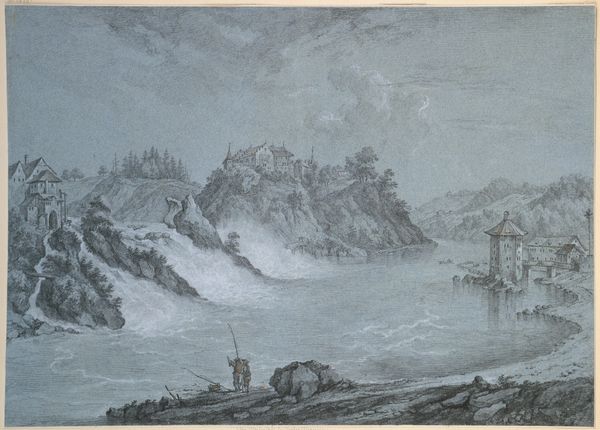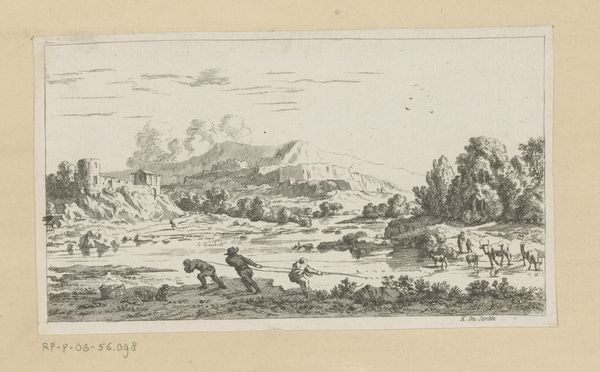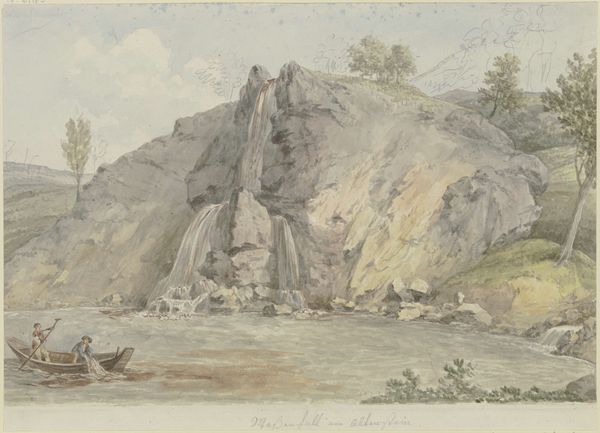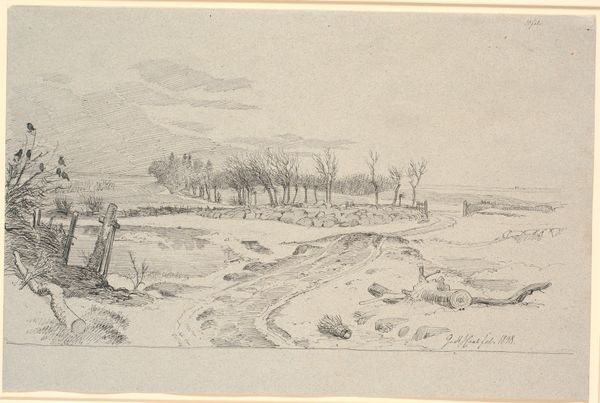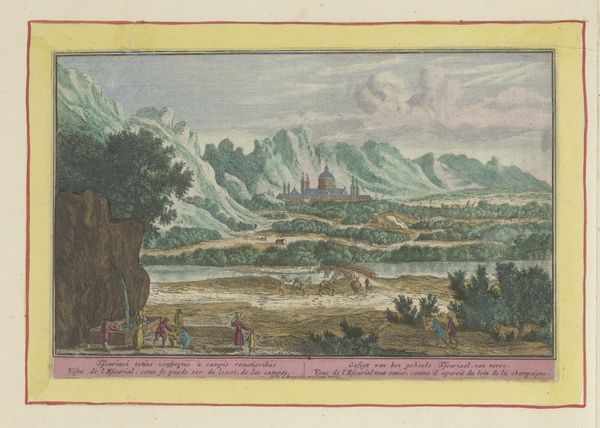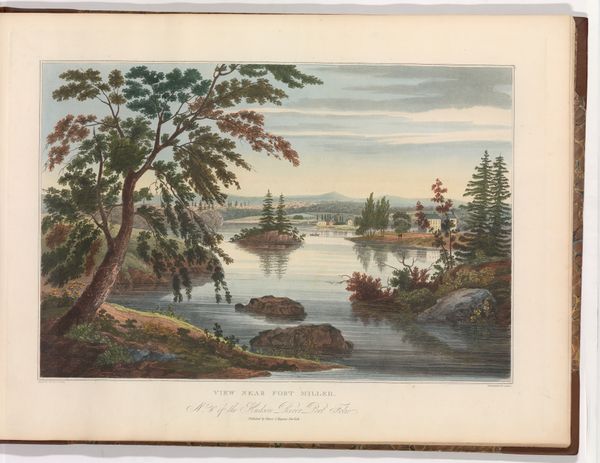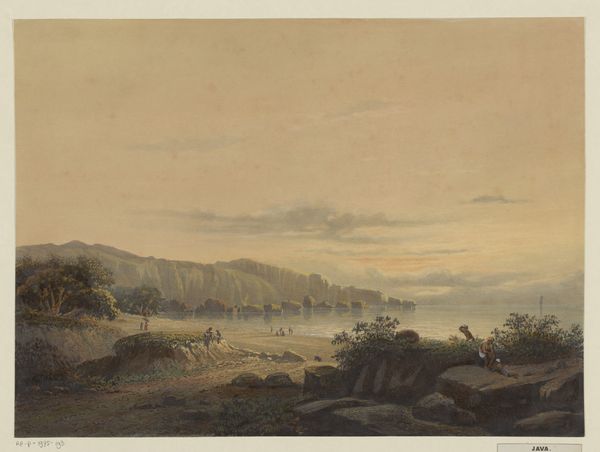
watercolor
#
landscape
#
watercolor
#
coloured pencil
#
indigenous-americas
Dimensions: 6 1/2 × 9 in. (16.5 × 22.9 cm) (image)9 5/8 × 12 3/4 in. (24.4 × 32.4 cm) (sheet)17 9/16 × 21 1/2 × 1 1/8 in. (44.6 × 54.6 × 2.9 cm) (outer frame)
Copyright: Public Domain
This small watercolor painting, Falls of St. Anthony, was made by Seth Eastman, who served as a Captain in the US Army in the mid-19th century. Eastman's choice of watercolor, a portable and relatively inexpensive medium, speaks to his position as a military man documenting the American landscape. The transparent washes of color allowed him to quickly capture the scene's atmospheric effects, like the mist rising from the falls and the vastness of the sky. Look closely and you will see the artist's hand in the small, precise brushstrokes. The texture of the paper also plays a role, adding subtle variations to the color and contributing to the overall sense of immediacy. Eastman’s position as an army officer, combined with his artistic skill, gives this work a unique historical weight, offering a glimpse into a time of expansion, conflict, and transformation of the American landscape. It is an act of recording, certainly, but also appropriation. By focusing on the materials and the making of this work, we can gain a deeper understanding of its historical and social context, challenging traditional distinctions between documentary and fine art.
Comments
minneapolisinstituteofart almost 2 years ago
⋮
Seth Eastman created this watercolor to illustrate the tale of Anpetu Sapawin, or Dark Day. She was so upset about her husband having a second wife that she took her baby and paddled to her death over St. Anthony Falls in present-day Minneapolis (shown here from the south). The work was reproduced in an 1852 publication called “The Iris.”
Join the conversation
Join millions of artists and users on Artera today and experience the ultimate creative platform.
